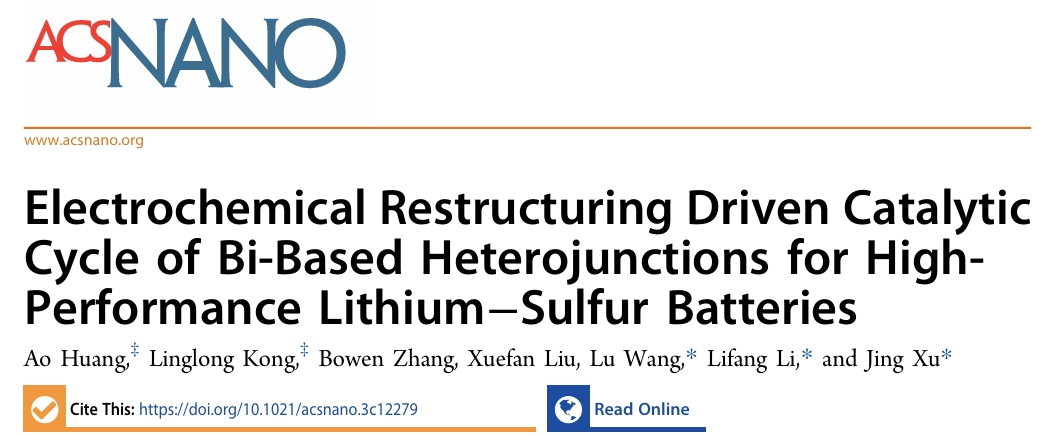
Recently, Huang Ao, a graduate student of our schoolcollege, published an online paper entitled "Electrochemical Restructuring Driven Catalytic Cycle of Bi-Based Heterojunctions for High-Performance Lithium–Sulfur Batteries" in the internationally renowned journal ACS Nano (TOP of the first district of the Chinese Academy of Sciencesjournal in Chemistry, impact factor 17.1). Associate Professor Kong Linglong of the College of Forestry is the co-first author of this paper, Associate Professor Wang Lu, Professor Li Lifang and Professor Xu Jing are the co-corresponding authors of this paper, and Shandong Agricultural University is the only unit to complete this paper.
Lithium-sulfur batteries have great potential due to their high theoretical energy density (2600 Wh kg−1). However, the slow redox kinetics of the sulfur cathode and the "shuttle effect" of the soluble intermediate lithium polysulfide lead to a large difference between the application performance of the battery and the actual requirements. It is an effective means to design and construct an efficient bidirectional catalytic carrier that accelerates the S reduction and Li2S oxidation processes at the same time, and improves the activity of the catalytic site.
In this study, based on the special phenomenon of catalyst structure recombination, the authors innovatively proposed to introduce a conversion electrode material with appropriate redox potential into the sulfur cathode as a carrier, and further generate highly active catalytic sites through electrochemically driven structural reconstruction, and constructed a reversible catalytic cycle system of Bi/amorphous Li3VO4 (a-Li3VO4) and Bi2S3/a-Li3VO4 heterojunction based on the electrochemical conversion reaction of BiVO4 in situ. The unique heterostructure and electrochemically driven size limitation of the catalytic system can provide abundant sites for inhibiting the shuttle effect and promoting sulfur conversion, and the effective p-p orbital hybridization between Bi and Bi2S3 in p-region and sulfur species can significantly reduce the conversion energy barrier of Li2S and lithium polysulfide, and realize the efficient reversible electrochemical conversion of sulfur cathode. The corresponding sulfur cathode still retains a high reversible capacity of 7.5 mAh cm−2 after 120 cycles under a high sulfur load of 10.3 mg cm−2, and can be stably cycled for 500 cycles at a large rate of 3 C, and the corresponding capacity attenuation rate is only 0.06%/week.
In this study, a high-performance sulfur cathode catalyst was obtained by electrochemically induced structural recombination, which provides a new perspective and idea for the construction of high-specific energy lithium-sulfur batteries.
This research work was supported by the National Natural Science Foundation of China, the Natural Science Foundation of Shandong Province, and the Youth Talent Introduction Program of Shandong Provincial Colleges and Universities.
Full text link: https://pubs.acs.org/doi/full/10.1021/acsnano.3c12279

